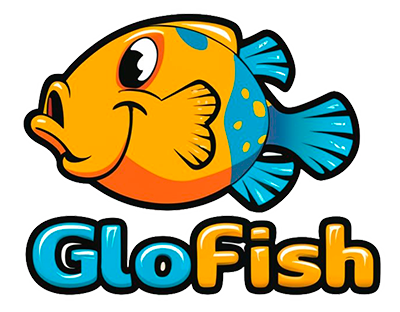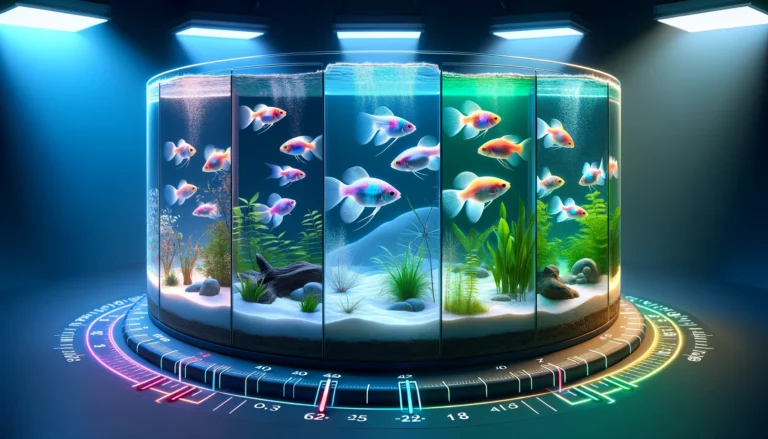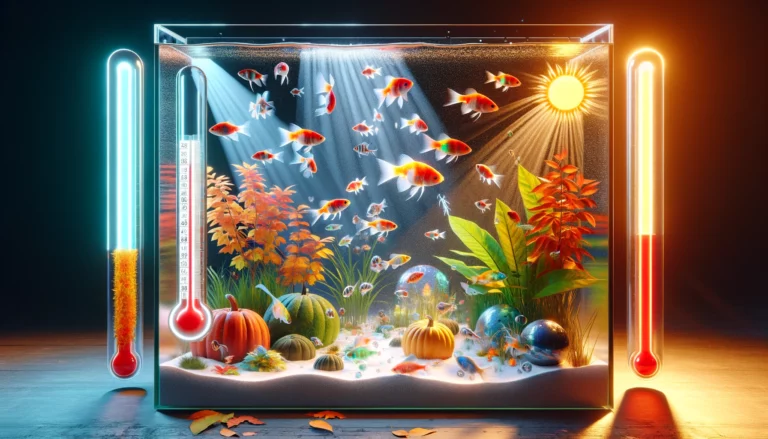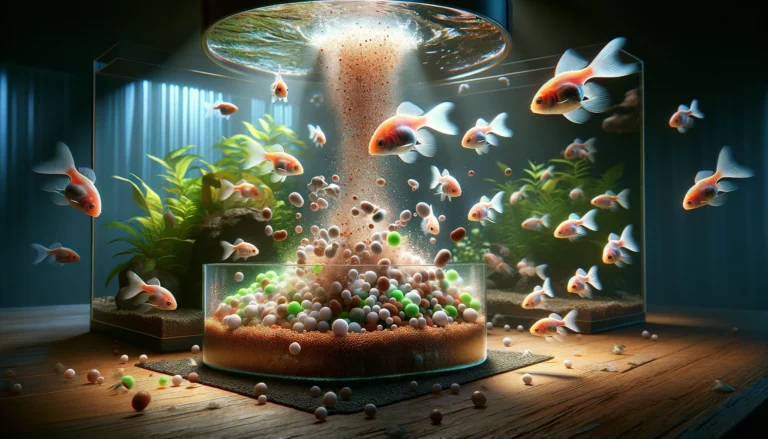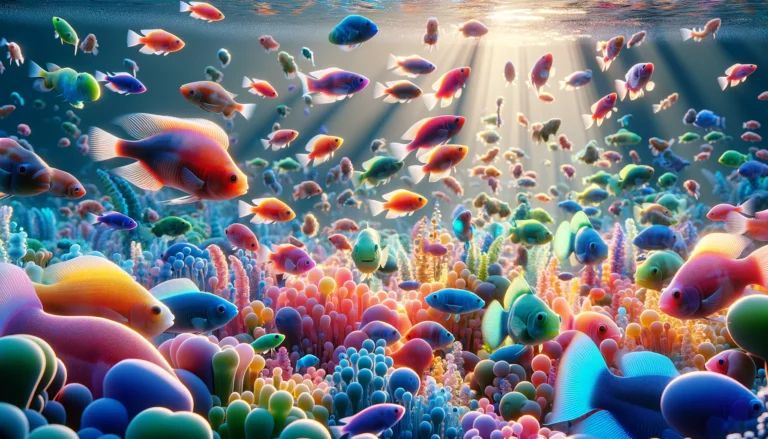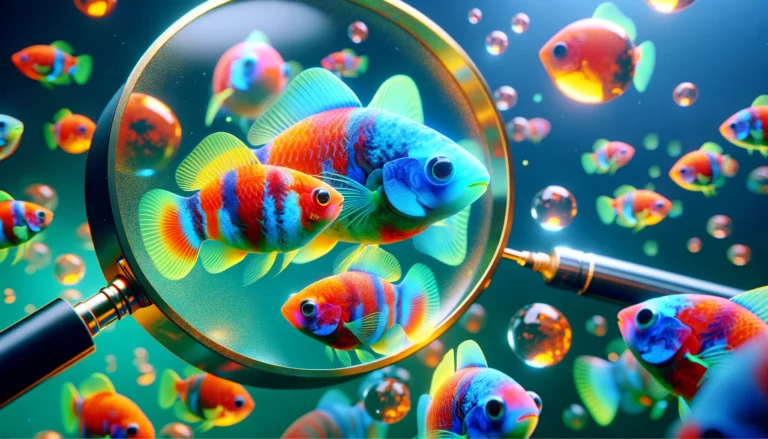GloFish Breeding Aquarium Specifications
GloFish are not your average pet fish. They stand out with their vibrant colors and unique glow. Originating from genetic modifications, these fish bring a splash of color to any aquarium. Their popularity is not just about looks, though. They are also known for their hardiness and ease of care, making them favorites among both novice and experienced aquarists.
The popularity of GloFish comes from more than their stunning appearance. These fish have a fascinating backstory, involving genetic research aimed at environmental monitoring. Initially, scientists engineered them to detect pollution. Now, they are beloved pets, admired in home aquariums worldwide.
Creating the right conditions for GloFish breeding is crucial
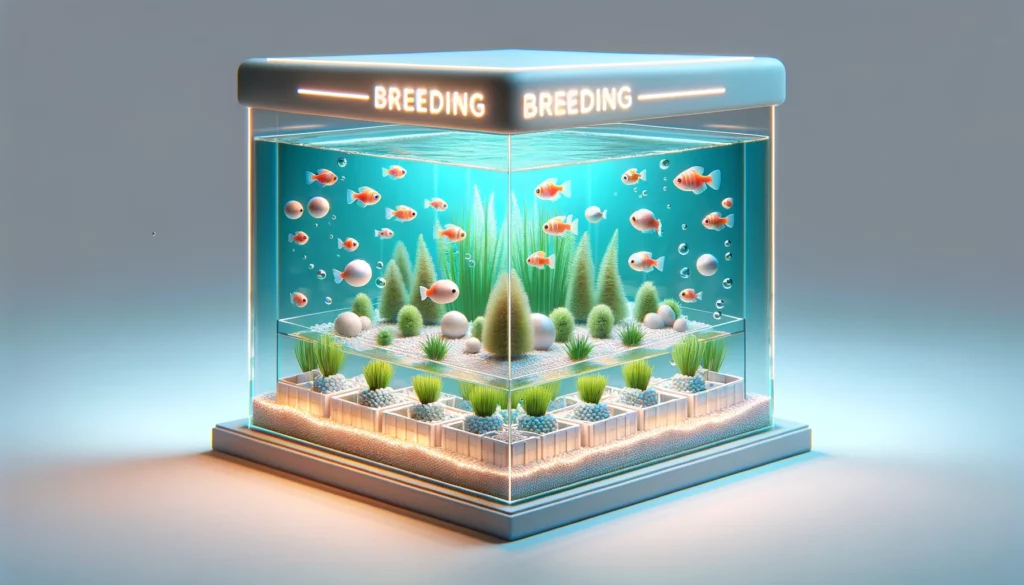
A well-maintained environment ensures the health and happiness of these unique creatures. It’s not just about aesthetic pleasure. Proper care and conditions can significantly impact their breeding success and overall well-being. For hobbyists, understanding and achieving these conditions can be a rewarding journey.
When it comes to breeding GloFish, it’s not just about preserving their beauty. It’s also about understanding the responsibility that comes with keeping genetically modified organisms. While they are similar to regular fish in many ways, their unique attributes require special attention. This ensures that the fascinating world of GloFish remains a sustainable and ethical hobby for all.
Basic Aquarium Requirements
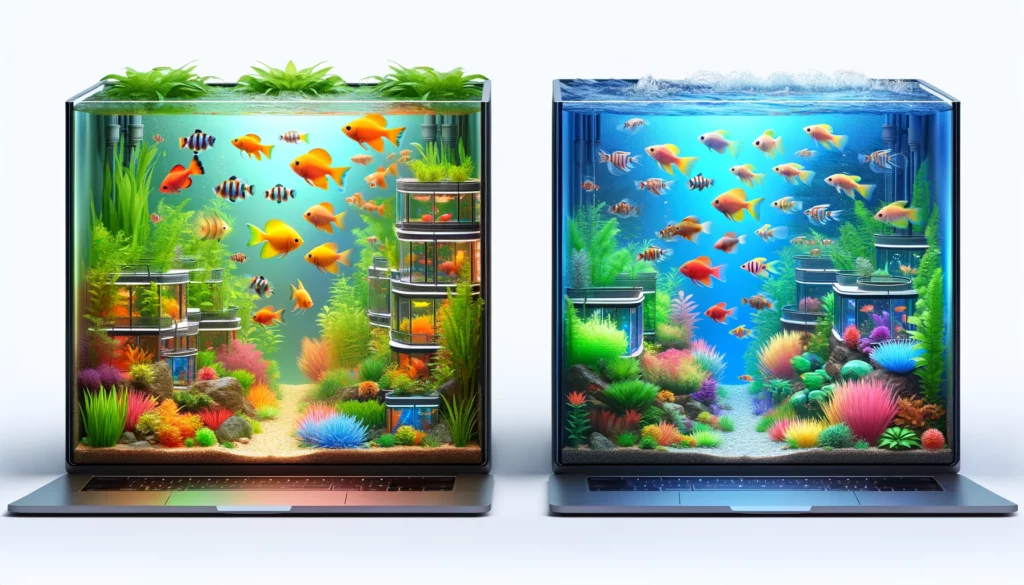
When setting up an aquarium for GloFish, size matters. A too-small tank can lead to stress and health issues. Generally, a 20-gallon tank is suitable for a small group of GloFish. This size provides enough space for swimming and exploration. For each additional fish, consider adding 3 to 5 gallons to maintain comfort.
The volume of the aquarium plays a key role in the well-being of GloFish. A larger volume means more stable water parameters. This stability is crucial for the health of the fish. It reduces the risk of rapid changes in water quality. A larger tank also allows for more effective filtration, contributing to a healthier environment.
When choosing an aquarium type for GloFish, options vary. A standard community aquarium works well. In this setting, GloFish can coexist with other non-aggressive species. This creates a dynamic and visually appealing environment. For breeding, a species-specific tank is preferable. This setup reduces stress and competition, providing a peaceful environment for GloFish to breed.
For those looking to breed GloFish, a specialized breeding tank can be beneficial. This tank is quieter and more controlled. It allows for close monitoring of breeding behavior and fry development. In this setup, you can adjust conditions to suit the breeding needs of GloFish. This can significantly increase the chances of successful breeding.
Water and Its Parameters
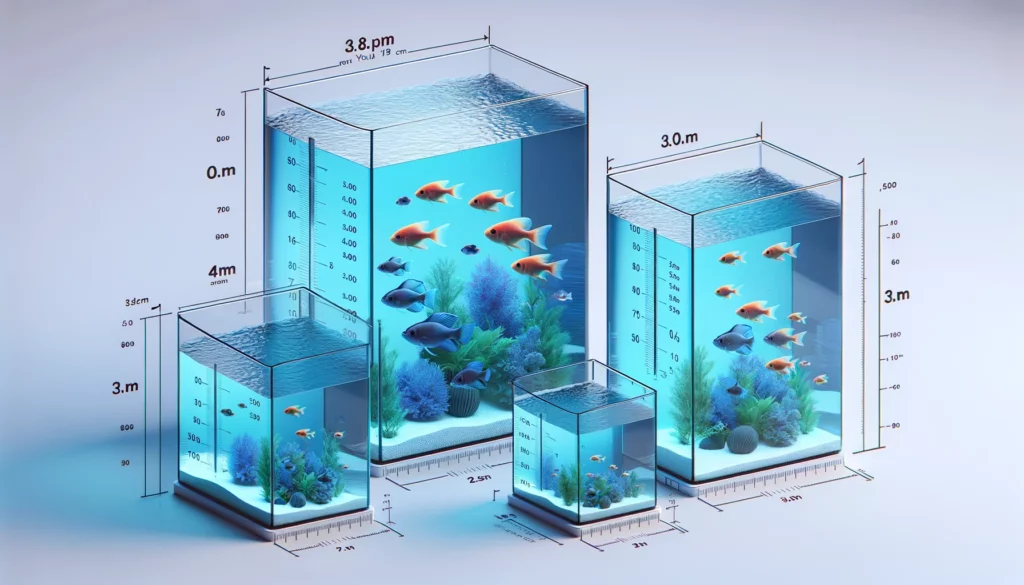
The water temperature in a GloFish tank is vital for their health and vitality. Ideally, keep the water between 72°F and 80°F. This range mimics their natural tropical habitat. It keeps them active and supports their metabolism. Sudden temperature changes can stress the fish. Always monitor and maintain a consistent temperature.
The pH of the water is another crucial factor for GloFish. They thrive in a pH range of 6.5 to 7.5. This slightly acidic to neutral range supports their biological processes. It helps in maintaining their bright coloration. Regularly test the water pH. Make adjustments carefully to avoid sudden shifts that can stress the fish.
Water hardness affects GloFish too. They prefer soft to moderately hard water. Aim for a hardness level of 5 to 19 dGH. This level ensures the right balance of minerals. It supports their overall health and well-being. Regular testing helps in maintaining the optimal hardness level.
Regular water changes are essential for maintaining water quality. Change 10% to 25% of the water weekly. This helps in removing toxins and replenishing essential minerals. It keeps the water environment fresh and healthy for the GloFish. Always treat new water to match the temperature and pH of the tank before adding it. This prevents shock and stress to the fish.
Lighting and Decorations
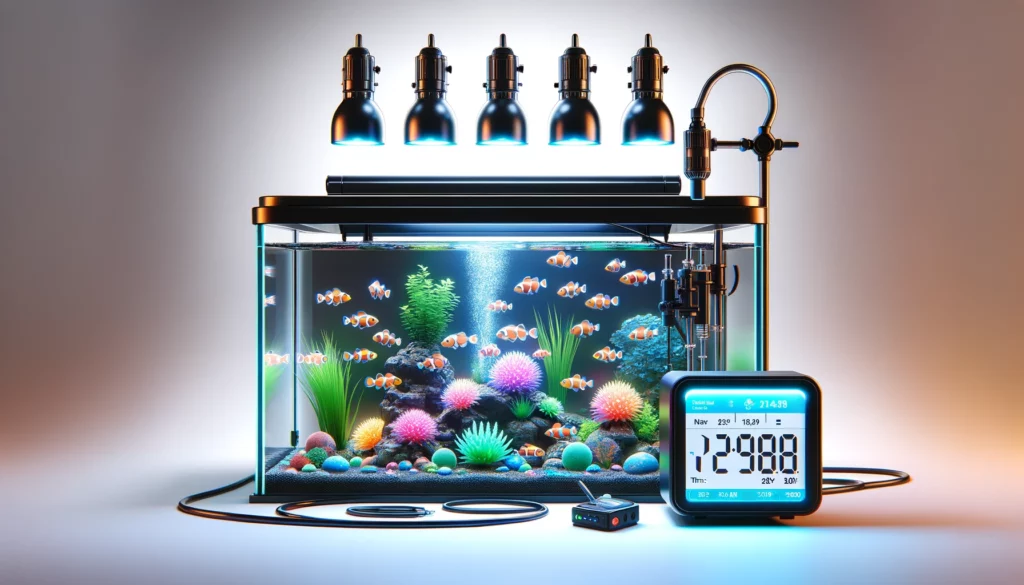
Lighting plays a pivotal role in showcasing the radiant colors of GloFish. It’s not just for aesthetics; it’s crucial for their health too. Opt for moderate to bright lighting. This simulates natural daylight, supporting their daily routines. Around 8 to 12 hours of light per day mirrors their natural cycle. It helps maintain a healthy sleep-wake rhythm.
Avoid excessive lighting. Too much light can cause stress and algae growth. It disrupts the natural behavior of GloFish. Use a timer to provide a consistent light-dark cycle. This consistency is key to keeping GloFish healthy and active. It also ensures they display their brightest colors.
Decorations and plants offer more than visual appeal

They create a habitat that resembles the natural environment of GloFish. Live or artificial plants provide shelter and space for exploration. They also assist in maintaining water quality. Plants absorb nitrates, enhancing the overall health of the aquarium.
Shelters and hiding spots are crucial for GloFish, especially when breeding. They offer a sense of security and spots for laying eggs. Include caves, driftwood, or dense plant areas. These features make the aquarium not just a home, but a comfortable breeding ground. They encourage natural behaviors and provide a sanctuary for GloFish during stressful times.
Filtration and Aeration
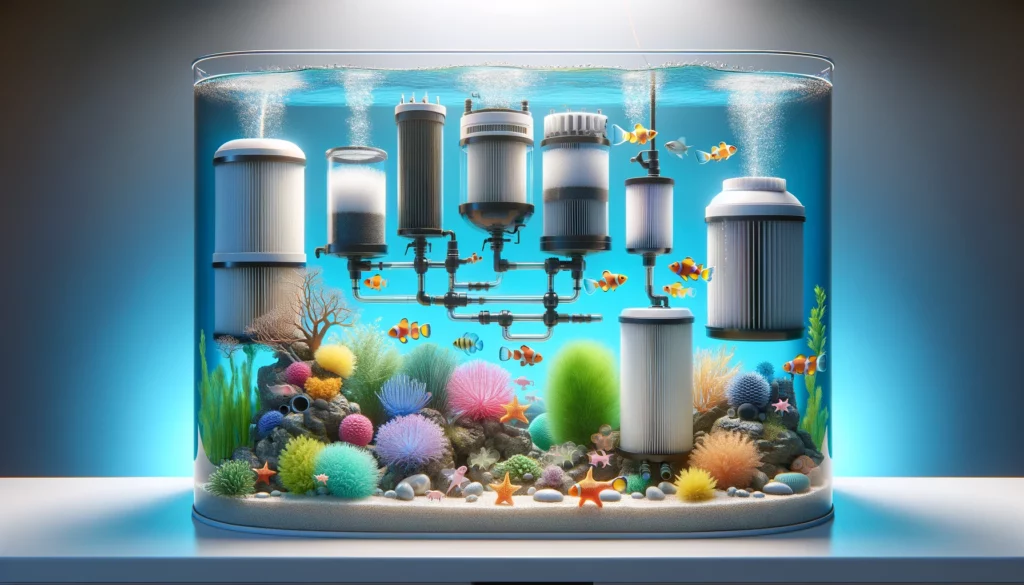
Filtration is the backbone of a healthy aquarium, especially for GloFish. It keeps the water clean and free from harmful substances. Use a high-quality filter suited for your tank’s size. Filters come in various types: mechanical, chemical, and biological. Each serves a specific purpose in maintaining water quality. Mechanical filters remove debris. Chemical filters purify water, and biological filters promote beneficial bacteria growth. For GloFish, a filter that combines all three types offers the best environment.
Regular maintenance of the filter is crucial. Clean or replace the filter media as recommended. This prevents clogging and ensures efficient filtration. It also keeps the water flow consistent, providing a stable environment for GloFish.
Aeration is equally important for a thriving GloFish habitat. It ensures an ample supply of dissolved oxygen. Oxygen is vital for fish respiration and overall health. Use an air pump with an air stone or a bubbler. This setup introduces oxygen into the water and creates water movement. This mimics natural currents, making the GloFish feel at home.
Proper aeration supports the biological filtration process too. It helps in breaking down waste products. This results in a cleaner and healthier tank. Monitor the aeration system regularly. Ensure it provides consistent and adequate oxygenation. This is particularly important in densely stocked tanks or during warmer temperatures when oxygen levels can drop.
Nutrition and Diet
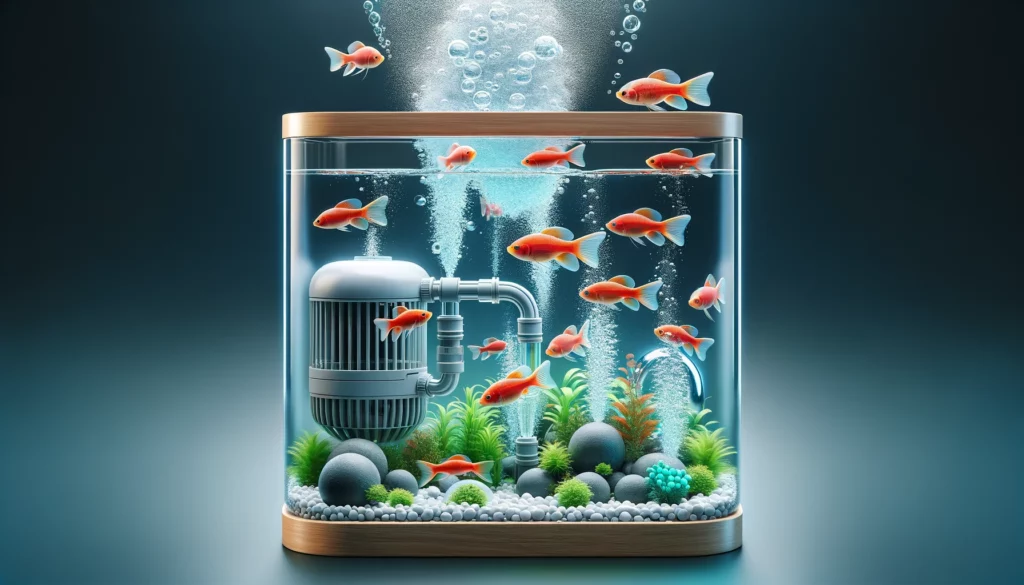
During the breeding period, the diet of GloFish becomes even more crucial. Offer a balanced diet rich in nutrients. This supports their health and increases the chances of successful breeding. Include high-quality flakes or pellets designed for tropical fish as the base of their diet. These foods are formulated to provide the necessary vitamins and minerals.
Enhance their diet with live or frozen foods. Options like brine shrimp, daphnia, or bloodworms are excellent. These foods are not just nutritious; they mimic the natural diet of GloFish. They are particularly beneficial during the breeding period. They provide the extra energy and nutrients needed for egg production and spawning.
Feeding frequency and portion control are key. Overfeeding leads to water quality issues and health problems. Feed your GloFish small amounts two to three times a day. Only give them as much as they can consume in a few minutes. During the breeding period, consistent, high-quality nutrition is essential. It ensures the fish are in optimal condition for reproduction.
Be observant of their behavior and appetite. Adjust the diet and feeding schedule as needed. This ensures they are receiving the right nutrition without compromising water quality. A well-fed GloFish is a healthy GloFish, and this is especially true during the demanding breeding period.
Preparation for Breeding
Recognizing when GloFish are ready to breed is the first step in successful breeding. Look for signs of readiness. Males often display more vibrant colors and may show more active courtship behavior. Females might appear fuller or rounder, indicating egg development. Observing your fish’s behavior closely can provide valuable clues to their breeding readiness.
Creating the right conditions in the aquarium is crucial for encouraging GloFish to breed. Firstly, ensure that the water parameters are optimal. The temperature, pH, and hardness should be within the ideal ranges for GloFish. A stable and clean environment mimics their natural breeding conditions.
Arrange the aquarium to provide suitable breeding spaces
Dense plants or breeding mops can serve as ideal spots for egg laying. These areas offer protection and a suitable substrate for eggs to adhere to. Make sure these spots are gentle and safe to encourage the female GloFish to lay her eggs.
Adjust the lighting to simulate longer daylight hours. This can trigger the breeding instinct in GloFish. However, ensure that the light is not too intense or direct. A balanced light-dark cycle is essential for their overall health and well-being.
Regular feeding with a nutritious diet is also part of the preparation. Provide a variety of foods to ensure that the fish are healthy and in good condition for breeding. A well-nourished GloFish is more likely to breed successfully.
By closely monitoring your fish and ensuring a conducive environment, you can significantly increase the chances of successful breeding. Remember, patience and careful observation are key. Each GloFish is unique, and their readiness to breed can vary.
Care for Eggs and Fry
After GloFish lay eggs, maintaining the right conditions is crucial for successful hatching. Keep the water clean and stable. This reduces the risk of fungal infections on the eggs. A gentle filtration system is important. It keeps the water clean without creating strong currents that could harm the eggs or newly hatched fry.
Monitor the temperature closely. A stable, warm environment supports the development of the eggs. Avoid sudden temperature changes. These can be detrimental to the eggs’ viability. Regularly check and adjust the water parameters to ensure they remain within the ideal range for GloFish.
Once the fry hatch, they are extremely delicate. Initially, they will consume their yolk sacs. After this, they require very fine food. Infusoria or commercially available fry food are good initial options. As they grow, you can gradually introduce larger foods like newly hatched brine shrimp.
Fry are vulnerable to water quality issues. Perform regular, small water changes to maintain cleanliness. However, be gentle and careful not to disturb the fry too much. Use a sponge filter or cover the intake of standard filters to prevent fry from being sucked in.
Provide plenty of hiding spaces for the fry. Plants or breeding mops offer shelter where the fry can hide and feel secure. This is important not just for their physical safety, but also for reducing stress, which is crucial for their healthy development.
As the fry grow, monitor their health and behavior closely. Be prepared to adjust their diet, the frequency of feeding, and the water parameters. A careful and attentive approach to the care of GloFish eggs and fry can significantly increase their chances of surviving into healthy adulthood.
Common Mistakes and Their Prevention
One common mistake in breeding GloFish is overlooking water quality. Poor water conditions can lead to stress, disease, and unsuccessful breeding. Regularly test and adjust the water parameters. Ensure the tank is cycled before introducing fish. Regular water changes are crucial to remove toxins and replenish essential minerals.
Another mistake is improper feeding. Overfeeding can pollute the water, while underfeeding can stress the fish. Offer a varied diet in appropriate amounts. Observe the fish during feeding to ensure they are eating well and adjust the feeding schedule and quantity as needed.
Ignoring the need for a proper breeding environment is also a mistake. GloFish require specific conditions to breed successfully. Provide plenty of hiding spots and an appropriate substrate for egg laying. Ensure the tank is peaceful and well-maintained. A stressful environment can discourage breeding behavior.
Neglecting the fry is a common oversight. Fry are delicate and require careful attention. Provide suitable food for their size and keep the water exceptionally clean. Protect them from filtration systems and larger fish. A dedicated fry tank can provide a controlled environment for their growth and development.
By being attentive to these aspects of care, you can significantly improve the success rate of breeding GloFish and ensure the well-being of both the adults and the fry. Patience, observation, and a willingness to learn from mistakes are key to becoming a successful GloFish breeder.
Conclusion
Breeding GloFish can be a rewarding experience if done correctly. Remember, the key to success lies in attention to detail and commitment to providing optimal care. Ensuring the right tank conditions, from size and water parameters to lighting and decorations, sets the stage for healthy GloFish and successful breeding.
Diet and nutrition play a critical role, especially during the breeding period. Offer a balanced diet and maintain a regular feeding schedule. Prepare for breeding by understanding the signs of readiness in GloFish and creating a conducive environment in the tank.
Once eggs are laid, focus on maintaining pristine water conditions and providing appropriate care for the fry. Be vigilant and proactive in managing common mistakes, such as neglecting water quality or feeding improperly. These efforts will pay off in the form of healthy, vibrant GloFish.
Let the journey of breeding GloFish be a testament to your dedication as an aquarist. With patience, knowledge, and a little effort, you can create a thriving environment that supports the life cycle of these unique and colorful fish. Your commitment not only enhances your aquarium but also contributes to the sustainable hobby of keeping and breeding GloFish.
